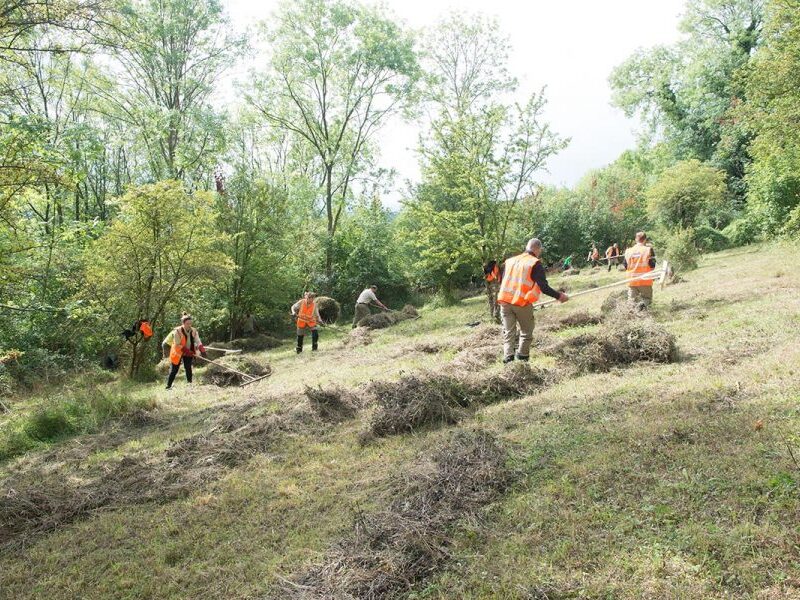Suggestions
Grounds Maintenance, Landscape Creation, Arboriculture, Sports Surfacing, Parks management, IOS Managing Safely Training, Ecology & Biodiversity, Grass cutting, Horticulture, Street Cleaning, Soft Landscaping, Hard Landscaping
Our Services
idverde provides a wide range of green services, including grounds maintenance, landscape creation, and advice services, to both private and public sectors across the UK.
CSR & Community Engagement
Have a question not covered here?
CSR & Community Engagement
idverde has made a real difference to local communities by changing our approach to how we provide grounds maintenance services. We deliver our services with local people to increase community engagement rather than just providing services per specification.
We have been working closely with our clients and local communities to overcome funding issues and change the way that services are delivered, in line with the latest government thinking, through innovative and inclusive solutions.
We believe that idverde’s community-based partnership approach to the job of grounds maintenance shows what can be done when all parties work together and support each other to provide natural, sustainable and affordable green spaces that meet the needs of local residents.
idverde embraces the requirements of the Public Services (Social Value) Act 2012 and has been integrating social value into its contracts for many years. We understand the importance of proposing initiatives and ideas that are realistic, proportionate and effective when it comes to benefiting the local economy, community and environment.
Our social value initiative starts with core company policy and training to ensure that all colleagues receive a comprehensive induction covering customer care, safeguarding and working in public places. This is then followed by an agreement to work within idverde policies and company standards with regard to protecting and respecting the communities that we work within.
Supporting voluntary and community sector activities
We work with hundreds of community groups each year including friends and resident groups and schools as part of our community engagement initiative. Our public sector contracts require us to engage with local community stakeholders throughout all stages of the projects. Our experience in this area led us to create a specialist department for overseeing community relations – the idverde Greenspace Development Team (iGDT).
The iGDT are specialist and highly skilled community-liaison staff with a wide array of skills including large-scale volunteer management, civil project management, landscape architecture, horticultural expertise, fundraising, green space management planning, ecology and environmental management.
We work with formal and informal volunteer groups across our contracts, offering a wide range of volunteering opportunities for corporate groups to participate in. These range from habitat management, to creating ‘forest schools’ as an educational resource for local schoolchildren. This not only has benefits for the local community but enables organisations to realise their Corporate Social Responsibility aims. We have had great feedback from participants, who relish the opportunity to give something back to their local communities, as well as an opportunity for team-building activities outdoors.
idverde has a Volunteer Handbook, Volunteer Health & Safety Pack and Working with Volunteers risk assessment and method statement as well as relevant insurance in place, ensuring the safety and wellbeing of participants at all times.
Working with Third Sector Partners
We work in partnership with organisations such as the environmental charity Groundwork, Thrive (who provide horticultural opportunities for people living with disabilities or ill health, or who are isolated, disadvantaged or vulnerable) and Blue Sky/The Forward Trust (the biggest employer of ex-offenders in the country) to provide work experience opportunities to those most in need. In partnership, we jointly focus on helping the clients with employability, rehabilitation (of ex-offenders) and health improvement.
We target those Not in Education, Employment or Training (NEETs) and the long-term unemployed to offer schemes for unemployed people. The schemes have benefits for all, those on the programmes have the opportunity to learn new skills and gain experience of a work environment to obtain references and potential future long-term employment. idverde gains a pool of potential future colleagues, ready-trained with experience of the contract to employ as seasonal staff or take up permanent opportunities. The local residents also benefit from improved standards of their surroundings at no extra cost and the community as a whole benefit from this sustainable and practical approach to dealing with unemployment issues.
To find out more about idverde’s community engagement and corporate social responsibility contact us.




